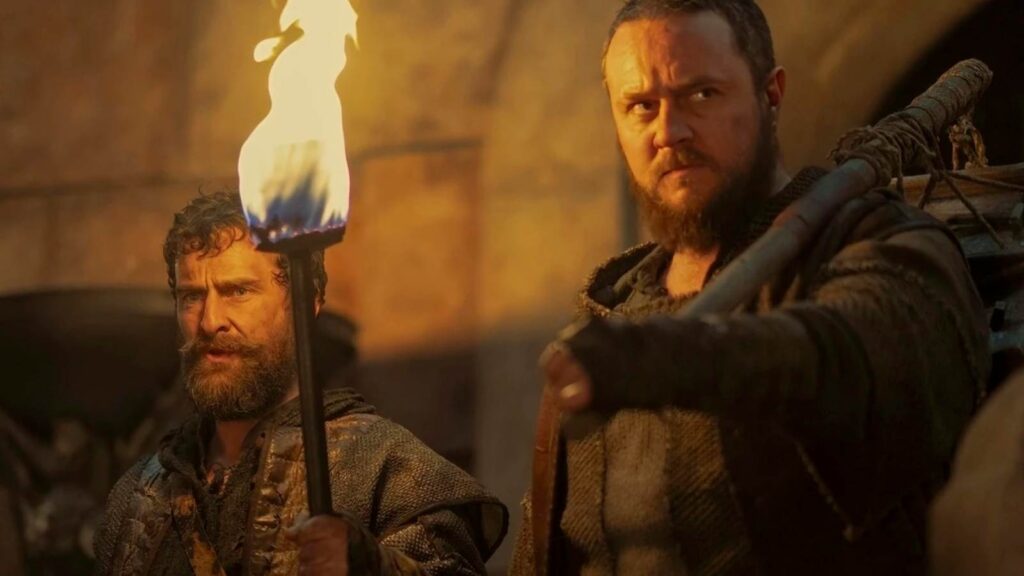One of the most glaring omissions in HBO’s ‘House of the Dragon’ is the absence of Maelor Targaryen. Maelor, in the books, is the third child of Queen Helaena and King Aegon.
While the series has faithfully adapted many intricate plotlines from George R.R. In Martin’s ‘Fire & Blood’, the character of Maelor has been conspicuously absent. Additionally, the reasons for Maelor’s exclusion are multifaceted.
Maelor Targaryen Might Have Been Left Out Due To The Show’s Accelerated Pacing

For starters, the series has taken significant creative liberties with the timeline. The first season compressed decades of storyline into a shorter narrative. This accelerated pacing might have simply left no room for the character’s introduction. Additionally, Maelor’s storyline is primarily focused on the aftermath of his gruesome demise.
Moreover, it might have been a narrative that could potentially be too dark and disturbing for a mainstream audience. In the books, Maelor’s life is tragically short-lived. He was born right in the midst of the Targaryen civil war.
The young prince becomes the unfortunate victim of a horrific plot orchestrated by the mysterious duo known as Blood and Cheese. Additionally, these assassins, employed by the Blacks, infiltrate the Red Keep with the intention of killing Prince Aegon II.
When confronted with the impossible task of choosing which of Helaena’s children to sacrifice, the queen, in a moment of despair, designates Maelor as the intended victim. However, fate intervenes. The assassins, in a cruel twist of irony, choose to murder the eldest child, Jaehaerys, instead.
The trauma of this event plunges Helaena into a deep depression, further isolating her from the world. Moreover, Maelor’s absence from the series raises intriguing questions about how the showrunners will adapt Helaena’s character arc.
In case you missed it: ‘Game Of Thrones’: HBO Is Developing A Prequel About Aegon’s Conquest
Theories Suggest That Aemond Targaryen Might Have Been Maelor’s Father

There is no explicit confirmation in George R.R. In Martin’s ‘Fire & Blood’, Aemond Targaryen is the biological father of Maelor Targaryen. However, the strong implications and the overall incestuous nature of the Targaryen family have fueled intense speculation among fans.
The close relationship between Aemond and Helaena, coupled with the Targaryen tradition of incestuous marriages, has led many to theorize that Aemond might be the true father of Maelor. This theory is further supported by the fact that Maelor was born shortly after the infamous incident where Aemond lost his eye.
The event drew the two closer together. However, it’s crucial to remember that this remains a theory. The book does not explicitly confirm or deny Aemond’s paternity. Additionally, whether or not this controversial aspect of the story will be explored in future seasons of ‘House of the Dragon’ remains to be seen.
The Blood And Cheese Scene, In General, Was Considered A Disappointment Among ‘House Of The Dragon’ Fans

The Blood and Cheese incident, a pivotal moment in the books, has been a subject of much discussion and debate among fans. While the series has, for the most part, managed to capture the essence of the sprawling saga, the adaptation of this particular event has left many feeling disappointed.
The core issue lies in the execution. The scene is intended to be a shocking and emotionally devastating turning point. However, in the show, it falls flat due to several factors. The first is the absence of Maelor Targaryen, Helaena’s third child.
Furthermore, the portrayal of Helaena as an enigmatic and distant figure hinders the emotional impact of the event. The character’s detachment prevents viewers from fully connecting with her and experiencing the depth of her suffering.
Additionally, the scene lacks the visceral response it should evoke. The decision to soften the brutality of the event is another misstep. While the series undoubtedly aims to avoid excessive gore, toning down the violence diminishes the horror and shock value of the scene.
By removing the element of random cruelty, the incident loses its ability to truly disturb and unsettle the audience. The episode’s conclusion, with the revelation of Jaehaerys’ death mixed with the discovery of Alicent and Criston Cole‘s infidelity, is a jarring and inappropriate shift in tone.
Moreover, this abrupt transition doesn’t sit well with fans. In contrast, the Red Wedding in ‘Game of Thrones’ serves as a powerful example of how to execute such a scene. The episode concludes with a chilling silence. This allows the audience to fully absorb the horror of the events that transpired.
You might like to read:





